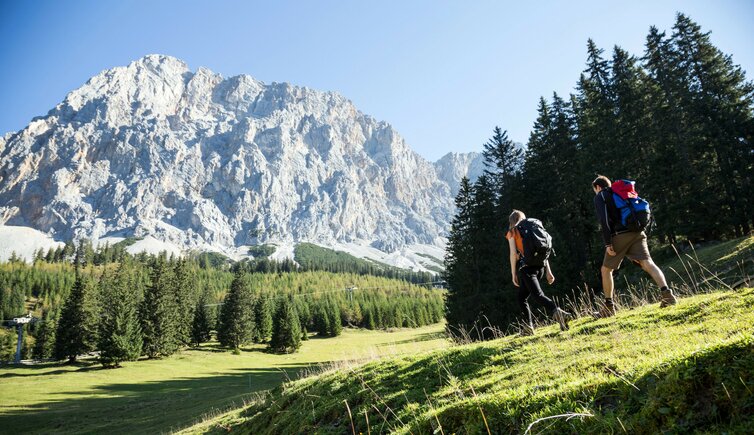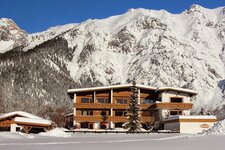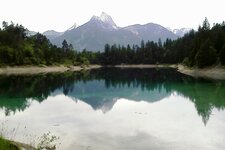The Zugspitze, the highest peak of Germany, is undoubtly the most famous mountain of the Wettersteingebirge
Image gallery: Wetterstein Mountains
The Wetterstein Mountains are a compact mountain chain between Garmisch-Partenkirchen, Mittenwald, Seefeld in Tirol and Ehrwald. They extend from Bavaria in Germany to Tyrol in Austria, and are bounded by the Ammergau Alps in the west and the north, the Bavarian pre-Alps in the north-east, the Karwendel Mountains in the east and the Mieming Range in the south.
Like the neighbouring mountain chains, also the Wetterstein Mountains date back millions of years and were formed out of sedimentations of the Tethys Sea. Those layers of seashells as well as corals folded up later on and formed the Wetterstein. Today, the mountain group is an eldorado for alpinists and climbers, who often have to face huge altitude differences on the stunning paths.
Peaks: The most famous elevation, the 2,962 m high Zugspitze, is at the same time the highest mountain of Germany. Among the other 10 highest summits there are Mt. Schneefernerkopf (2,875 m a.s.l.), Mt. Zugspitzeck (2,820 m a.s.l.) and the 2,746 m high Hochwanner.
Trails: The Red Path of the Via Alpina traverses the Wetterstein Mountains in three stages. Furthermore, they feature several fixed-rope routes of various levels of difficulty, including the Zugspitze Via Ferrata, the Schneefernerkopf Route and the Alpspitz Ferrata. Popular starting points for hikes are the holiday villages Garmisch-Partenkirchen in Bavaria and Ehrwald in Tyrol.














































